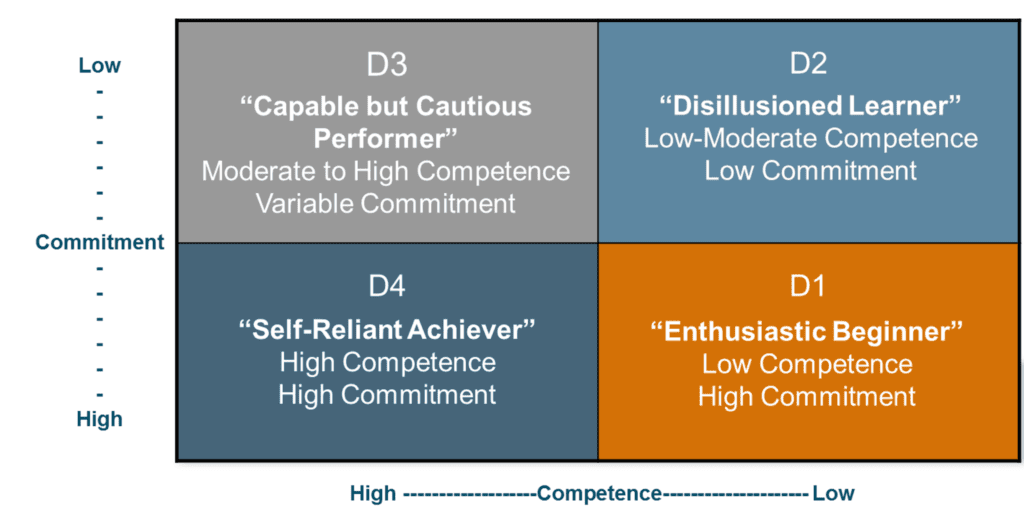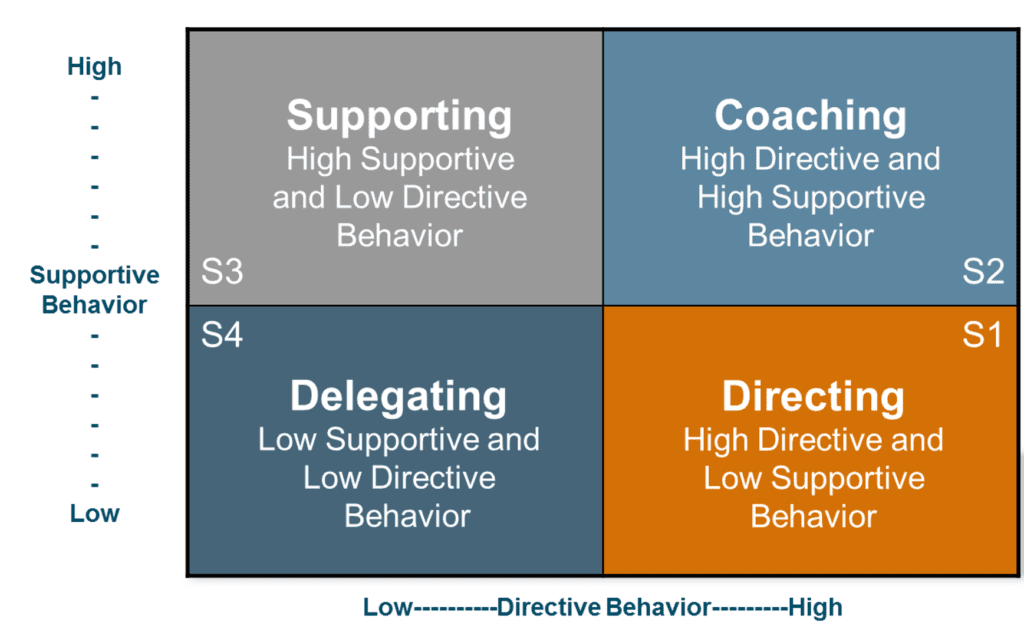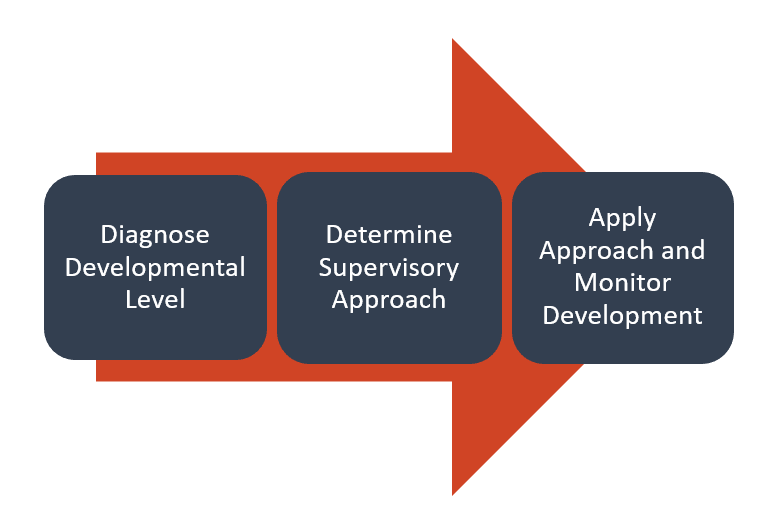In Situational Leadership, the emphasis is on changing the leader’s leadership style and approach based on the type of follower you are working with. By considering high/low competency and high/low commitment, a follower can be

Enthusiastic Beginner – Low Competence/Low Confidence and Commitment. Eager to learn, ready to take on new tasks.
Disillusioned Learner – Low-moderate Competence/High Confidence and Commitment. Still learning, task might turn out harder than originally thought or less interesting. Commitment and confidence fluctuates.
Capable but Cautious Performer – Moderate-High Competence/Variable Confidence and Commitment. Wondering whether they can perform on their own. Goes back and forth between feeling competent and self doubt.
Self-reliant Achiever – High Competence/High Confidence and Commitment. Always demonstrates a high level of competency and commitment and delivers results.
Based on the type of follower, the leader needs to change their style by varying their degree of directives and support.

Directing – The leader provides specific direction and closely monitors task accomplishment.
Coaching – The leader continues to direct and closely monitor task accomplishments but also explains decisions, solicits suggestions and support progress.
Supporting – The leader facilitates and support people’s efforts towards task accomplishment and share decision-making with them.
Delegating – The leader turns over responsibility for decision-making and problem solving.
Now that we’ve looked at different models and ways for individual development, let’s switch and take a look at team development.
Learn more about the Situational Leadership in the Building High Performing Teams Workshop.
Also check out the complete Fostering Self-organizing Teams series:
- What is a Self-organizing Team?
- Scrum Magic! Do Scrum – Become Hype-productive!
- 3 Models for Skills Acquisition
- Shu Ha Ri
- The Dreyfus Model of Skills Acquisition
- Situational Leadership
- Tuckman’s Stages of Group Development
- Drexler/Sibbet Team Performance Model
- The ScrumMaster’s Role is Fostering a High Performing Self-Organizing Team
- 7 Attributes of a Self-Organizing Team
- Delegation Board for Fostering a Self-Organizing Team
- The ScrumMaster’s Progressive Delegation Responsibility
- Fostering Self-Organizing Teams Presentation
